tutorial, study resources, film version, and web links
Washington Square (1880) is a short novel originally published as a serial in Cornhill Magazine and Harper’s New Monthly Magazine. It is a structurally simple tragicomedy that recounts the conflict between a dull but sweet daughter and her brilliant, domineering father. She has a handsome young suitor – but the father disapproves of him. There is a battle of wills – all conducted within the confines of their elegant town house. Who wins out in the end? You will be surprised by the outcome. This is a masterpiece of social commentary, with a sensitive picture of a woman’s life. The plot of the novel is based upon a true story told to James by his close friend, the British actress Fanny Kemble. The book is often compared to Jane Austen’s work for the clarity and grace of its prose and its intense focus on family relationships.

first American edition 1880
Washington Square – plot summary
Dr. Austin Sloper is a rich and intelligent widower who lives in Washington Square, New York with his only surviving child, Catherine. She is a sweet-natured woman who is a great disappointment to her father, being physically plain and, he believes, mentally dull. Sloper’s beloved wife, along with a promising young son, died many years before. His busybody sister, the widowed Lavinia Penniman, is the only other member of the doctor’s household.
 One day, Catherine meets the charming Morris Townsend at a party and is swept off her feet. Morris courts Catherine, aided by Mrs. Penniman, who loves melodrama. Dr. Sloper strongly disapproves, believing him to be after Catherine’s money. When Catherine and Morris announce their engagement, he checks into Morris’s background and finds him to be penniless and parasitic. The doctor forbids his daughter to marry Townsend, and the loyal Catherine cannot bring herself to choose between her father and her fiancé.
One day, Catherine meets the charming Morris Townsend at a party and is swept off her feet. Morris courts Catherine, aided by Mrs. Penniman, who loves melodrama. Dr. Sloper strongly disapproves, believing him to be after Catherine’s money. When Catherine and Morris announce their engagement, he checks into Morris’s background and finds him to be penniless and parasitic. The doctor forbids his daughter to marry Townsend, and the loyal Catherine cannot bring herself to choose between her father and her fiancé.
Dr. Sloper understands Catherine’s strait and pities her a little, but also finds an urbane entertainment in the situation. In an effort to resolve the matter, he announces that he will not leave any money to Catherine if she marries Morris. He then takes her on a twelve month grand tour of Europe to distract her attention from Townsend.
During their months abroad, he mentions Catherine’s engagement only twice; once while they are alone together in the Alps, and again on the eve of their return voyage. On both occasions, Catherine holds firm in her desire to marry. After she refuses for a second time to give Morris up, Sloper sarcastically compares her to a sheep fattened up for slaughter. With this, he finally goes too far: Catherine recognises his contempt, withdraws from him, and prepares to bestow all her love and loyalty on Morris.
Upon their return however, when Catherine convinces her fiance that her father will never relent, Townsend breaks off the relationship. Catherine is devastated, then eventually recovers her equanimity, but is never able to forget the injury.
Many years pass. Catherine refuses two respectable offers of marriage and grows into a middle aged spinster. Dr. Sloper finally dies and leaves her a sharply reduced income in his will out of fear that Townsend will reappear. In fact, Morris – now fat, balding, cold-eyed, but still somewhat attractive – does eventually pay a call on Catherine, hoping to effect a reconcilation. But she calmly rebuffs his overtures. The novel concludes with “Catherine … picking up her morsel of fancy-work, had seated herself with it again — for life, as it were.”
Study resources
![]() Washington Square – Oxford World Classics – Amazon UK
Washington Square – Oxford World Classics – Amazon UK
![]() Washington Square – Oxford World Classics – Amazon US
Washington Square – Oxford World Classics – Amazon US
![]() Washington Square – Wordsworth Classics – Amazon UK
Washington Square – Wordsworth Classics – Amazon UK
![]() Washington Square – Wordsworth Classics – Amazon US
Washington Square – Wordsworth Classics – Amazon US
![]() Washington Square – Brodie’s Notes
Washington Square – Brodie’s Notes
![]() Washington Square – York Notes
Washington Square – York Notes
![]() Washington Square – 1998 film adaptation on DVD
Washington Square – 1998 film adaptation on DVD
![]() Washington Square – eBook versions at Project Gutenberg
Washington Square – eBook versions at Project Gutenberg
![]() Washington Square – audioBook (unabridged) at Amazon UK
Washington Square – audioBook (unabridged) at Amazon UK
![]() Washington Square – audioBook at LibriVox
Washington Square – audioBook at LibriVox
![]() The Cambridge Companion to Henry James – Amazon UK
The Cambridge Companion to Henry James – Amazon UK
![]() Henry James – biographical notes
Henry James – biographical notes
![]() Henry James at Wikipedia – biographical notes, links
Henry James at Wikipedia – biographical notes, links
![]() Henry James at Mantex – tutorials, web links, study resources
Henry James at Mantex – tutorials, web links, study resources
Principal characters
| Dr Austin Sloper | a successful, rich, and satirical doctor |
| Catherine Sloper | his unmarried daughter |
| Lavinia Penniman | Catherine’s intefering widowed aunt |
| Morris Townsend | a handsome young fortune-hunter |
| Mrs Almond | Sloper’s married sister |
| Marian Almond | Mrs Almond’s vivacious daughter |
| Mrs Montgomery | Morris Townsend’s impoverished sister |
Washiongton Square – film version
1949 William Wyler screen adaptation
An all star cast of Olivia de Havilland as Catherine, Ralph Richardson as Doctor Sloper, and Montgomery Clift as Morris Townsend. Aaron Copland is credited with having composed the theme music, but he denied it.
See reviews of the film at the Internet Movie Database.
Film version
1949 William Wyler screen adaptation
An all star cast of Olivia de Havilland as Catherine, Ralph Richardson as Doctor Sloper, and Montgomery Clift as Morris Townsend. Aaron Copland is credited with having composed the theme music, but he denied it.
See reviews of the film at the Internet Movie Database.
Further reading
![]() Theodora Bosanquet, Henry James at Work, University of Michigan Press, 2007.
Theodora Bosanquet, Henry James at Work, University of Michigan Press, 2007.
![]() F.W. Dupee, Henry James: Autobiography, Princeton University Press, 1983.
F.W. Dupee, Henry James: Autobiography, Princeton University Press, 1983.
![]() Leon Edel, Henry James: A Life, HarperCollins, 1985.
Leon Edel, Henry James: A Life, HarperCollins, 1985.
![]() Philip Horne (ed), Henry James: A Life in Letters, Viking/Allen Lane, 1999.
Philip Horne (ed), Henry James: A Life in Letters, Viking/Allen Lane, 1999.
![]() Henry James, The Letters of Henry James, Adamant Media Corporation, 2001.
Henry James, The Letters of Henry James, Adamant Media Corporation, 2001.
![]() Fred Kaplan, Henry James: The Imagination of Genius, Johns Hopkins University Press, 1999
Fred Kaplan, Henry James: The Imagination of Genius, Johns Hopkins University Press, 1999
![]() F.O. Matthieson (ed), The Notebooks of Henry James, Oxford University Press, 1988.
F.O. Matthieson (ed), The Notebooks of Henry James, Oxford University Press, 1988.
Critical commentary
![]() Elizabeth Allen, A Woman’s Place in the Novels of Henry James London: Macmillan Press, 1983.
Elizabeth Allen, A Woman’s Place in the Novels of Henry James London: Macmillan Press, 1983.
![]() Ian F.A. Bell, Henry James and the Past, London: Palgrave Macmillan, 1993.
Ian F.A. Bell, Henry James and the Past, London: Palgrave Macmillan, 1993.
![]() Millicent Bell, Meaning in Henry James, Cambridge (MA): Harvard University Press, 1993.
Millicent Bell, Meaning in Henry James, Cambridge (MA): Harvard University Press, 1993.
![]() Harold Bloom (ed), Modern Critical Views: Henry James, Chelsea House Publishers, 1991.
Harold Bloom (ed), Modern Critical Views: Henry James, Chelsea House Publishers, 1991.
![]() Kirstin Boudreau, Henry James’s Narrative Technique, Macmillan, 2010.
Kirstin Boudreau, Henry James’s Narrative Technique, Macmillan, 2010.
![]() J. Donald Crowley and Richard A. Hocks (eds), The Wings of the Dove, New York: W.W. Norton and Company, 1978.
J. Donald Crowley and Richard A. Hocks (eds), The Wings of the Dove, New York: W.W. Norton and Company, 1978.
![]() Victoria Coulson, Henry James, Women and Realism, Cambridge University Press, 2009.
Victoria Coulson, Henry James, Women and Realism, Cambridge University Press, 2009.
![]() Daniel Mark Fogel, A Companion to Henry James Studies, Greenwood Press, 1993.
Daniel Mark Fogel, A Companion to Henry James Studies, Greenwood Press, 1993.
![]() Virginia C. Fowler, Henry James’s American Girl: The Embroidery on the Canvas, Madison (Wis): University of Wisconsin Press, 1984.
Virginia C. Fowler, Henry James’s American Girl: The Embroidery on the Canvas, Madison (Wis): University of Wisconsin Press, 1984.
![]() Jonathan Freedman, The Cambridge Companion to Henry James, Cambridge University Press, 1998.
Jonathan Freedman, The Cambridge Companion to Henry James, Cambridge University Press, 1998.
![]() Judith Fryer, The Faces of Eve: Women in the Nineteenth Century American Novel, Oxford: Oxford University Press, 1976
Judith Fryer, The Faces of Eve: Women in the Nineteenth Century American Novel, Oxford: Oxford University Press, 1976
![]() Roger Gard (ed), Henry James: The Critical Heritage, London: Routledge, 1968.
Roger Gard (ed), Henry James: The Critical Heritage, London: Routledge, 1968.
![]() Tessa Hadley, Henry James and the Imagination of Pleasure, Cambridge University Press, 2009.
Tessa Hadley, Henry James and the Imagination of Pleasure, Cambridge University Press, 2009.
![]() Barbara Hardy, Henry James: The Later Writing (Writers & Their Work), Northcote House Publishers, 1996.
Barbara Hardy, Henry James: The Later Writing (Writers & Their Work), Northcote House Publishers, 1996.
![]() Richard A. Hocks, Henry James: A study of the short fiction, New York: Twayne Publishers, 1990.
Richard A. Hocks, Henry James: A study of the short fiction, New York: Twayne Publishers, 1990.
![]() Donatella Izzo, Portraying the Lady: Technologies of Gender in the Short Stories of Henry James, University of Nebraska Press, 2002.
Donatella Izzo, Portraying the Lady: Technologies of Gender in the Short Stories of Henry James, University of Nebraska Press, 2002.
![]() Colin Meissner, Henry James and the Language of Experience, Cambridge University Press, 2009
Colin Meissner, Henry James and the Language of Experience, Cambridge University Press, 2009
![]() John Pearson (ed), The Prefaces of Henry James, Pennsylvania State University Press, 1993.
John Pearson (ed), The Prefaces of Henry James, Pennsylvania State University Press, 1993.
![]() Richard Poirer, The Comic Sense of Henry James, Oxford: Oxford University Press, 1967.
Richard Poirer, The Comic Sense of Henry James, Oxford: Oxford University Press, 1967.
![]() Hugh Stevens, Henry James and Sexuality, Cambridge University Press, 1998.
Hugh Stevens, Henry James and Sexuality, Cambridge University Press, 1998.
![]() Merle A. Williams, Henry James and the Philosophical Novel, Cambridge University Press, 1993.
Merle A. Williams, Henry James and the Philosophical Novel, Cambridge University Press, 1993.
![]() Judith Woolf, Henry James: The Major Novels, Cambridge University Press, 1991.
Judith Woolf, Henry James: The Major Novels, Cambridge University Press, 1991.
![]() Ruth Yeazell (ed), Henry James: A Collection of Critical Essays, Longmans, 1994.
Ruth Yeazell (ed), Henry James: A Collection of Critical Essays, Longmans, 1994.
Other works by Henry James
 The Aspern Papers (1888) is a psychological drama set in Venice which centres on the tussle for control of a great writer’s correspondence. An elderly lady, ex-lover of the writer, seeks a husband for her daughter. But the potential purchaser of the papers is a dedicated bachelor. Money is also at stake – but of course not discussed overtly. There is a refined battle of wills between them. Who will win in the end? As usual, James keeps the reader guessing. The novella is a masterpiece of subtle narration, with an ironic twist in its outcome. This collection of stories also includes three of his accomplished long short stories – The Private Life, The Middle Years, and The Death of the Lion.
The Aspern Papers (1888) is a psychological drama set in Venice which centres on the tussle for control of a great writer’s correspondence. An elderly lady, ex-lover of the writer, seeks a husband for her daughter. But the potential purchaser of the papers is a dedicated bachelor. Money is also at stake – but of course not discussed overtly. There is a refined battle of wills between them. Who will win in the end? As usual, James keeps the reader guessing. The novella is a masterpiece of subtle narration, with an ironic twist in its outcome. This collection of stories also includes three of his accomplished long short stories – The Private Life, The Middle Years, and The Death of the Lion.
![]() Buy the book from Amazon UK
Buy the book from Amazon UK
![]() Buy the book from Amazon US
Buy the book from Amazon US
 The Spoils of Poynton (1896) is a short novel which centres on the contents of a country house, and the question of who is the most desirable person to inherit it via marriage. The owner Mrs Gereth is being forced to leave her home to make way for her son and his greedy and uncultured fiancee. Mrs Gereth develops a subtle plan to take as many of the house’s priceless furnishings with her as possible. But things do not go quite according to plan. There are some very witty social ironies, and a contest of wills which matches nouveau-riche greed against high principles. There’s also a spectacular finale in which nobody wins out.
The Spoils of Poynton (1896) is a short novel which centres on the contents of a country house, and the question of who is the most desirable person to inherit it via marriage. The owner Mrs Gereth is being forced to leave her home to make way for her son and his greedy and uncultured fiancee. Mrs Gereth develops a subtle plan to take as many of the house’s priceless furnishings with her as possible. But things do not go quite according to plan. There are some very witty social ironies, and a contest of wills which matches nouveau-riche greed against high principles. There’s also a spectacular finale in which nobody wins out.
![]() Buy the book from Amazon UK
Buy the book from Amazon UK
![]() Buy the book from Amazon US
Buy the book from Amazon US
 Daisy Miller (1879) is a key story from James’s early phase in which a spirited young American woman travels to Europe with her wealthy but commonplace mother. Daisy’s innocence and her audacity challenge social conventions, and she seems to be compromising her reputation by her independent behaviour. But when she later dies in Rome the reader is invited to see the outcome as a powerful sense of a great lost potential. This novella is a great study in understatement and symbolic power.
Daisy Miller (1879) is a key story from James’s early phase in which a spirited young American woman travels to Europe with her wealthy but commonplace mother. Daisy’s innocence and her audacity challenge social conventions, and she seems to be compromising her reputation by her independent behaviour. But when she later dies in Rome the reader is invited to see the outcome as a powerful sense of a great lost potential. This novella is a great study in understatement and symbolic power.
![]() Buy the book from Amazon UK
Buy the book from Amazon UK
![]() Buy the book from Amazon US
Buy the book from Amazon US
Henry James – web links
![]() Henry James at Mantex
Henry James at Mantex
Biographical notes, study guides, tutorials on the Complete Tales, book reviews. bibliographies, and web links.
![]() The Complete Works
The Complete Works
Sixty books in one 13.5 MB Kindle eBook download for £1.92 at Amazon.co.uk. The complete novels, stories, travel writing, and prefaces. Also includes his autobiographies, plays, and literary criticism – with illustrations.
![]() The Ladder – a Henry James website
The Ladder – a Henry James website
A collection of eTexts of the tales, novels, plays, and prefaces – with links to available free eTexts at Project Gutenberg and elsewhere.
![]() A Hyper-Concordance to the Works
A Hyper-Concordance to the Works
Japanese-based online research tool that locates the use of any word or phrase in context. Find that illusive quotable phrase.
![]() The Henry James Resource Center
The Henry James Resource Center
A web site with biography, bibliographies, adaptations, archival resources, suggested reading, and recent scholarship.
![]() Online Books Page
Online Books Page
A collection of online texts, including novels, stories, travel writing, literary criticism, and letters.
![]() Henry James at Project Gutenberg
Henry James at Project Gutenberg
A major collection of eTexts, available in a variety of eBook formats.
![]() The Complete Letters
The Complete Letters
Archive of the complete correspondence (1855-1878) work in progress – published by the University of Nebraska Press.
![]() The Scholar’s Guide to Web Sites
The Scholar’s Guide to Web Sites
An old-fashioned but major jumpstation – a website of websites and resouces.
![]() Henry James – The Complete Tales
Henry James – The Complete Tales
Tutorials on the complete collection of over one hundred tales, novellas, and short stories.
![]() Henry James on the Internet Movie Database
Henry James on the Internet Movie Database
Adaptations of James’s novels and stories for the cinema and television – in various languages. Full details of directors and actors, production features, film reviews, box office, and even quizzes.
© Roy Johnson 2010
More on Henry James
More on literature
More on the novella
More on literary studies
More on short stories

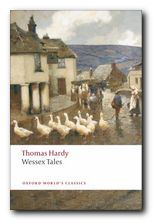
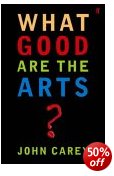
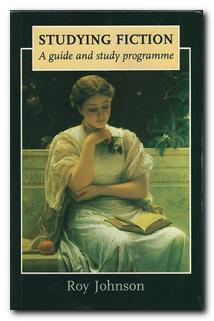 Studying Fiction is an introduction to the basic concepts and technical terms you need when making a study of stories and novels. It shows you how to understand literary analysis by explaining its elements one at a time, then showing them at work in short stories which are reproduced as part of the book. Topics covered include – setting, characters, story, point of view, symbolism, narrators, theme, construction, metaphors, irony, prose style, tone, close reading, and interpretation. The book also contains self-assessment exercises, so you can check your understanding of each topic. It was written by the same author as the guidance notes on this page that you are reading right now.
Studying Fiction is an introduction to the basic concepts and technical terms you need when making a study of stories and novels. It shows you how to understand literary analysis by explaining its elements one at a time, then showing them at work in short stories which are reproduced as part of the book. Topics covered include – setting, characters, story, point of view, symbolism, narrators, theme, construction, metaphors, irony, prose style, tone, close reading, and interpretation. The book also contains self-assessment exercises, so you can check your understanding of each topic. It was written by the same author as the guidance notes on this page that you are reading right now.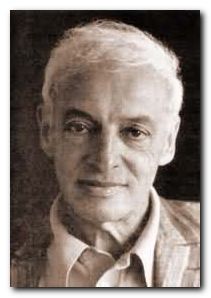
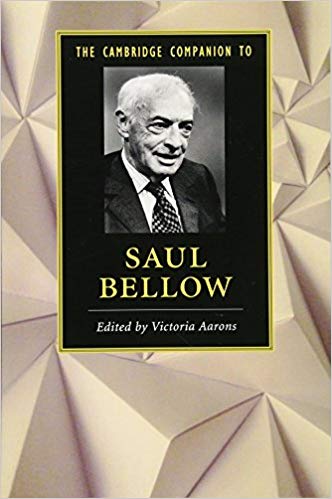



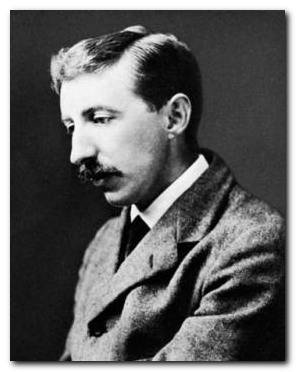
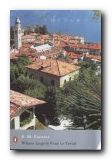 Lilia Herriton is a young woman whose huband has recently died. Leaving her daughter in the care of her in-laws (whose money she has inherited) she makes a journey to Tuscany with her young friend and traveling companion Caroline Abbott. She falls in love with both Italy and Gino Carella, a handsome Italian much younger than herself, and decides to stay. Furious, her dead husband’s family send Lilia’s brother-in-law to Italy to prevent a misalliance, but he arrives too late. Lilia has already married the Italian and in due course she becomes pregnant.
Lilia Herriton is a young woman whose huband has recently died. Leaving her daughter in the care of her in-laws (whose money she has inherited) she makes a journey to Tuscany with her young friend and traveling companion Caroline Abbott. She falls in love with both Italy and Gino Carella, a handsome Italian much younger than herself, and decides to stay. Furious, her dead husband’s family send Lilia’s brother-in-law to Italy to prevent a misalliance, but he arrives too late. Lilia has already married the Italian and in due course she becomes pregnant.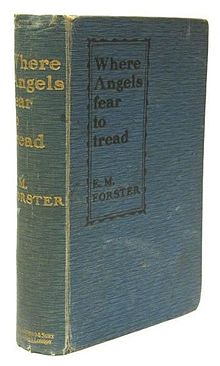
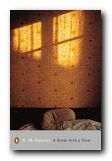 A Room with a View
A Room with a View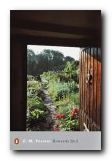 Howards End
Howards End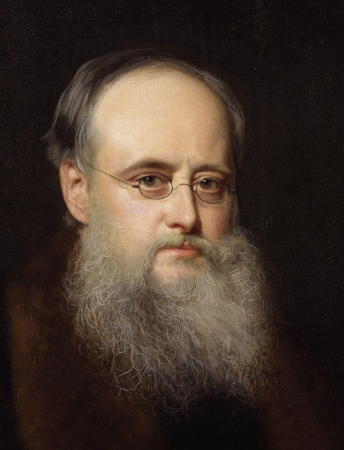
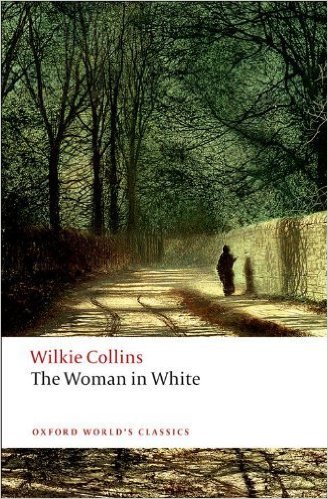
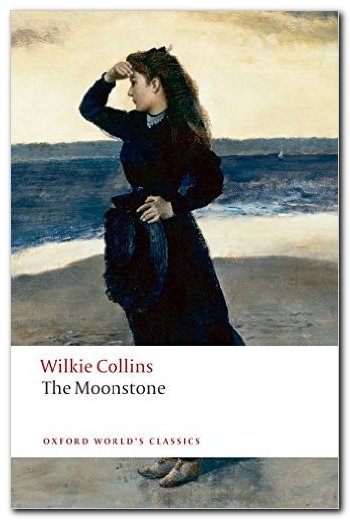
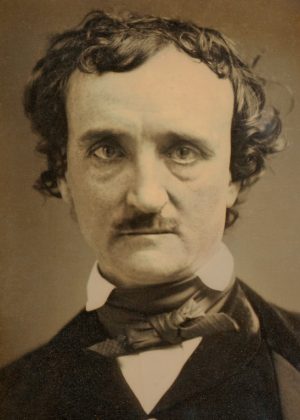
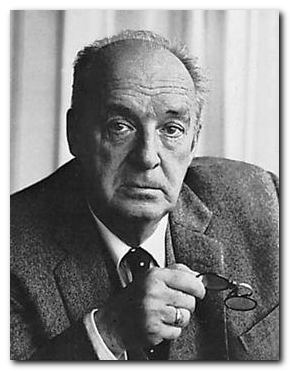
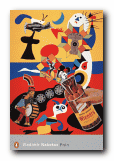 Pnin
Pnin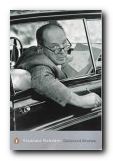 Collected Stories
Collected Stories